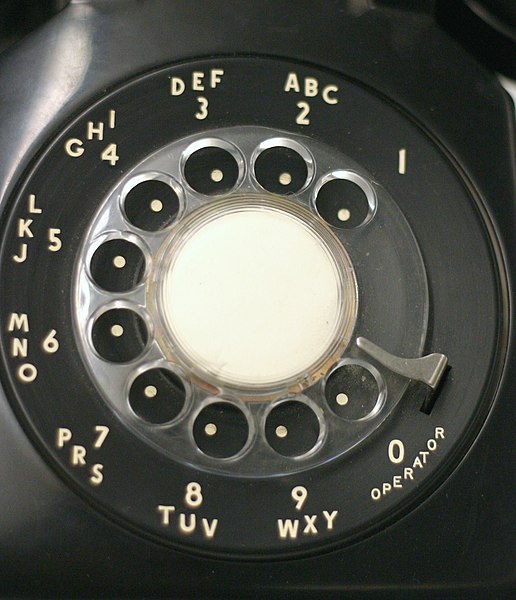A rotary dial is a component of a telephone or a telephone switchboard that implements a signaling technology in telecommunications known as pulse dialing. It is used when initiating a telephone call to transmit the destination telephone number to a telephone exchange.
A traditional North American rotary telephone dial. The associative lettering was originally used for dialing named exchanges but was kept because it facilitated memorization of telephone numbers.
The LM Ericsson Dialog from the 1960s that remained popular in Sweden and Finland up until the 1980s
Swedish rotary telephone. The 0 precedes 1.
A 1931 Ericsson rotary dial telephone without lettering on the finger wheel, typical of European telephones. The 0 precedes 1.
A telephone is a telecommunications device that permits two or more users to conduct a conversation when they are too far apart to be easily heard directly. A telephone converts sound, typically and most efficiently the human voice, into electronic signals that are transmitted via cables and other communication channels to another telephone which reproduces the sound to the receiving user. The term is derived from Greek: τῆλε and φωνή, together meaning distant voice. A common short form of the term is phone, which came into use early in the telephone's history.
An old rotary dial telephone
AT&T push button telephone made by Western Electric, model 2500 DMG black, 1980
Alexander Graham Bell's Telephone Patent Drawing
Replica of the telettrofono, invented by Antonio Meucci and credited by several sources as the first telephone.








